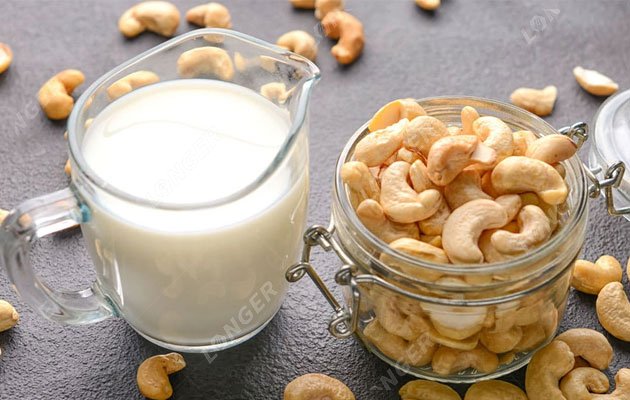How is Cashew Milk Produced in the Factory?
In recent years, plant-based milk alternatives have gained significant popularity, and one such dairy-free alternative that has captured the attention of health-conscious consumers is cashew milk. Made from the creamy and nutrient-rich cashew nuts, cashew milk offers a delicious dairy-free option for those seeking an alternative to traditional cow's milk. So how is cashew milk produced?
In this blog, we'll take you inside the factory and discover the intricate steps involved in turning the humble cashew into smooth, delicious milk.


1. Cashew Selection and Sorting:
The production of cashew milk begins with the careful selection and sorting of cashew nuts. High-quality cashews are chosen, and any damaged or discolored nuts are removed. Sorting ensures that only the best nuts are used, resulting in a superior quality milk.
2. Grinding and Soaking:
Once sorted, the cashews are thoroughly cleaned and then ground into a fine paste. This grinding process breaks down the cashews and releases their natural oils, creating a creamy base for the milk. The ground cashews are then soaked in water, allowing them to soften and become easier to blend.
3. Filtration and Straining:
The soaked cashew paste is transferred to a filtration system that separates the nut solids from the liquid. This process typically involves passing the mixture through a series of fine mesh screens to remove any remaining cashew particles, resulting in a smooth and silky milk. Additionally, some manufacturers employ cold-press filtration methods to maintain the maximum nutritional content and flavor of the milk.
4. Homogenization:
To ensure a consistent texture and prevent separation, the filtered cashew milk is often subjected to homogenization. This process breaks down the fat globules in the milk, ensuring they remain evenly dispersed. Homogenization creates a smooth and creamy texture, making cashew milk a delightful addition to various recipes and beverages.
5. Pasteurization and Sterilization:
To ensure the safety and extend the shelf life of cashew milk, it undergoes pasteurization and sterilization. Pasteurization involves heating the milk to a specific temperature to eliminate harmful bacteria while maintaining its nutritional properties. Sterilization, on the other hand, involves subjecting the milk to even higher temperatures to achieve a longer shelf life. These processes help to maintain the freshness and quality of cashew milk, making it safe for consumption.
6. Flavoring and Fortification:
Once the milk is sterilized, it can be flavored and fortified according to desired preferences. Some manufacturers may add natural sweeteners, such as dates or vanilla, to enhance the taste. Fortification with vitamins and minerals, like calcium or vitamin D, is also common to make cashew milk a nutritious choice comparable to cow's milk.
7. Filling and Packaging:
After the final processing stages, the cashew milk is ready for packaging. It is carefully filled into containers, such as cartons or bottles, using specialized equipment to maintain hygiene and prevent contamination. The packaging is designed to preserve the freshness and quality of the milk until it reaches consumers.
Conclusion:
From the meticulous selection of cashews to the final packaging, the production of cashew milk is a remarkable process. In the factory, a professional cashew milk production line makes the production process more efficient.
By understanding the steps involved, we can appreciate the craftsmanship and dedication behind creating this delightful dairy-free alternative that nourishes our bodies and tantalizes our taste buds.
By understanding the steps involved, we can appreciate the craftsmanship and dedication behind creating this delightful dairy-free alternative that nourishes our bodies and tantalizes our taste buds.
Message
